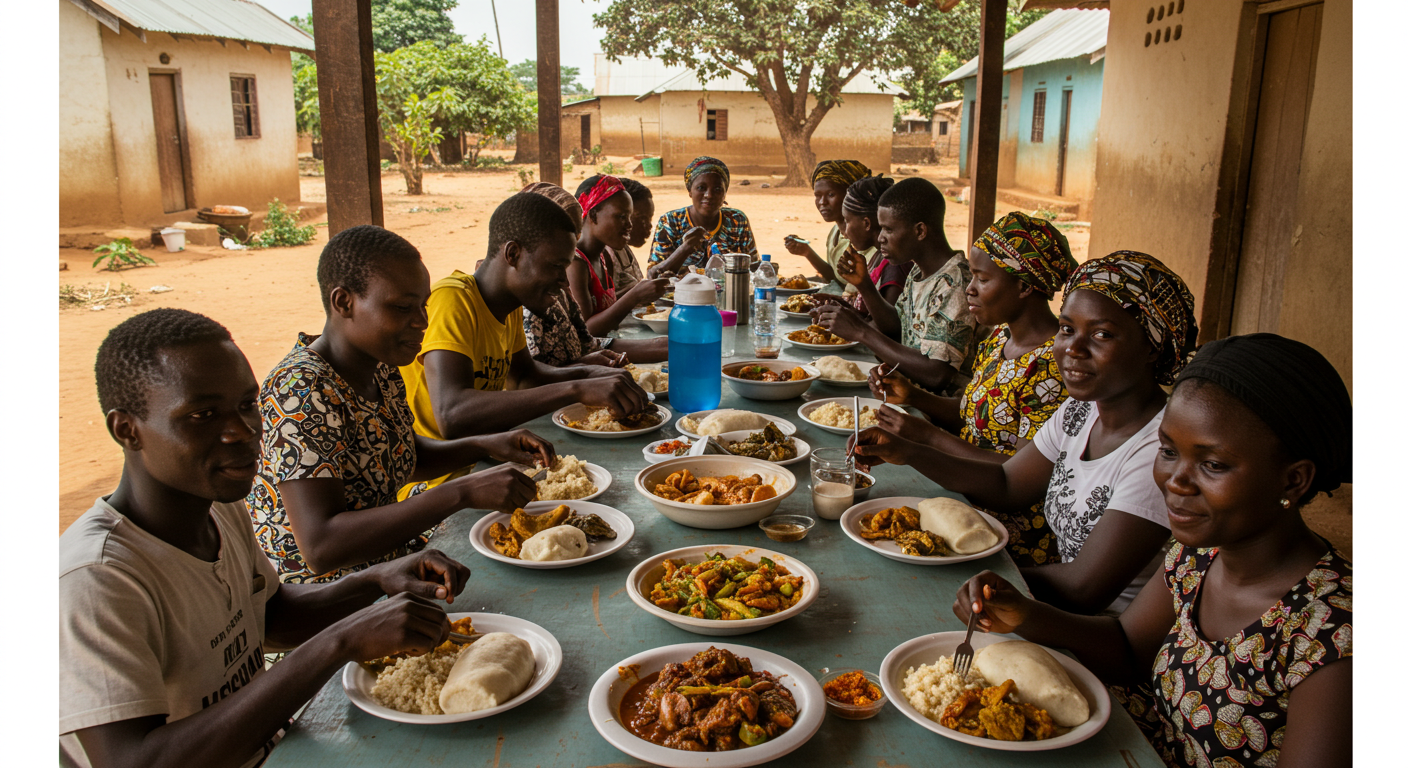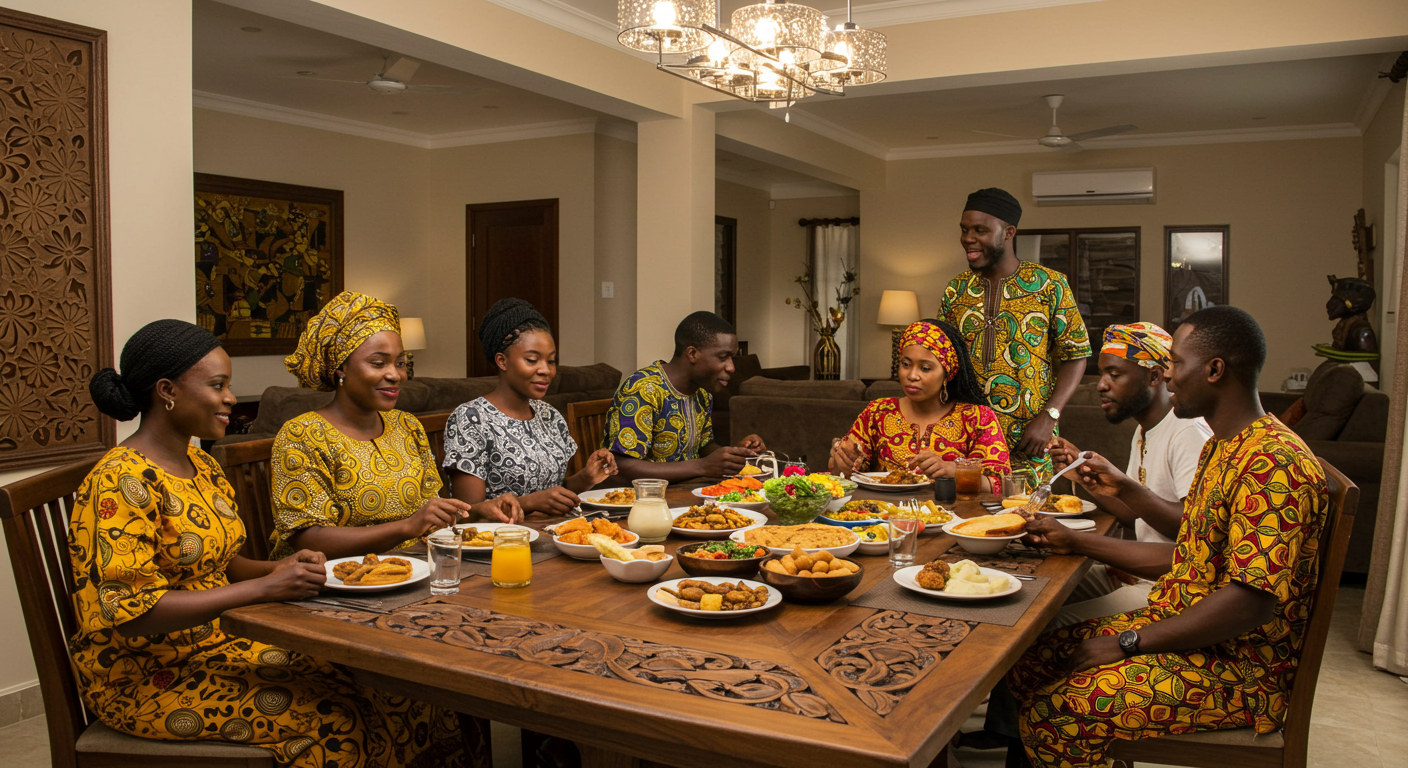Eating Culture in Ghana
Food in Ghana is more than just nourishment. It is culture, identity, and community woven into one. From bustling households in Accra to rural villages in the north, the act of eating reflects values of togetherness, respect, and hospitality. Beyond the delicious flavors of jollof rice, fufu, or waakye, the way Ghanaians eat tells the story of unity and heritage that has been passed down for generations.
Traditionally, families and friends gather around a common bowl during meals. This practice symbolizes togetherness, equality, and communal living. No matter one’s age, status, or role, everyone dips from the same bowl showing that food binds people together.
This practice is especially evident during family gatherings, festive occasions, and ceremonies, where sharing food strengthens bonds and promotes mutual respect.
In Ghanaian eating culture, the right hand is always used for eating. It is considered clean, respectful, and honorable. Using the left hand, by contrast, is traditionally seen as impolite, since the left hand is associated with tasks considered unclean.
Even when cutlery is used in modern settings, traditional meals like fufu, kenkey, and banku are still enjoyed with the right hand, connecting people to cultural roots and authenticity.
Eating in Ghana is rarely a silent or lonely activity. Meals are often paired with storytelling, laughter, and music. In rural areas, elders share folktales while children eat, passing on cultural values and wisdom. In urban settings, music and conversation make every meal a lively experience.
During festivals, weddings, funerals, and communal events, food becomes a social glue, bringing together people across generations and communities.
In Ghanaian society, offering food to visitors is a sign of hospitality and goodwill. It is common for guests to be welcomed with food and drink, even if they arrive unexpectedly. Refusing food can sometimes be seen as disrespectful, as sharing what one has is deeply ingrained in Ghanaian values.
Today, with urbanization and globalization, eating habits are evolving. Dining tables, individual plates, and cutlery are becoming common in cities. Fast food joints are growing popular among the youth. However, during traditional occasions, the communal eating culture still thrives, reminding Ghanaians of their shared heritage and the importance of unity.
The eating culture in Ghana is a celebration of unity, respect, and social bonding. More than filling the stomach, it nourishes relationships and preserves cultural values. Whether it’s enjoying a bowl of fufu with family, sharing waakye at a street corner, or offering kenkey to a guest, every act of eating is a reflection of Ghana’s spirit of togetherness.
Related content
Interdum et malesuada fames








